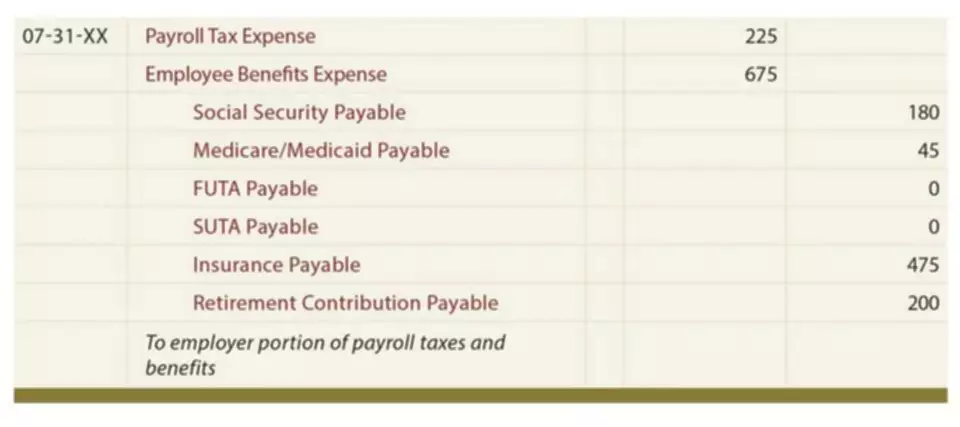Content

If you revamp its look, like getting a paint job done, adding new cabinets, changing lights and furniture, and other things adds lots to aesthetics. These minor interior design changes add to your liabilities, so keep changes under budget to cover the cost and help improve the Owner’s equity. Is a term that refers to the % of ownership and control, accelerated by individuals within a Company.
What is an example of owner’s equity?
Owner’s Equity = Assets – Liabilities
If Assets = $780 and Liabilities = $560, Owner’s Equity = $780 – $560 = $220.
Other examples of owner’s equity are proceeds from the sale of stock, returns from investments, and retained earnings.
If you are a sole proprietor or partner, you or you and your partners are entitled to everything in your business. Owner’s equity is calculated by adding up all of the business assets and deducting all of its liabilities. One of the most important lines in your financial statements is owner’s equity. The equity multiplier is a calculation of how much of a company’s assets is financed by stock rather than debt.
What Is A Statement Of Owner’s Equity?
Secondly, to pay taxes and liquidation expenses, including legal fees and judgments. See the section Increasing and Decreasing Owners equity, below, for more on these components. Companies may declare bankruptcy statement of stockholders equity and still intend to stay in business. Second, Owners Equity role when companies declare bankruptcy or liquidate. #WTFact Videos In #WTFact Britannica shares some of the most bizarre facts we can find.
- If liabilities still exceed assets then there is negative equity and if assets exceed liabilities there is positive equity.
- However, their claims are discharged before the shares of common stockholders at the time of liquidation.
- For a sole proprietorship or partnership, the value of equity is indicated as the owner’s or the partners’ capital account on the balance sheet.
- If a 2-liter bottle of store-brand cola costs $1 and a 2-liter bottle of Coke costs $2, then Coca-Cola has brand equity of $1.
The balance sheet also shows that Norman owes DCBank $400,000, owes creditors $900,000, and the wages and salaries are $600,000. Suppose a company’s equity accounts on January 1, 2020, the start of its fiscal year 2020, consists of the following. Both US GAAP and IFRS require companies to include a document that outlines the changes in all equity accounts for greater investor transparency. The balance sheet is a type of financial statement that shows your business’s performance during a specific time. To find owner’s equity, you need to add up all your assets and liabilities. Liabilities are debts your business owes, such as loans, accounts payable, and mortgages. Assets are anything your business owns, such as cash, cars, and intellectual property.
What Is Owner’s Equity – Definition
When creditors provide the majority of a company’s funding , the company is said to be highly leveraged. Firstly, to pay off outstanding liabilities and creditors, including bondholders. High -level view of a Balance Sheet showing the Owners Equity section.
At the same time, if liabilities are large relative to Owners equity, creditors may fear that proceeds from asset liquidation will not even be large enough to pay off all creditors. Owner’s equity is viewed as a residual claim on the business assets because liabilities have a higher claim. Owner’s equity can also be viewed as a source of the business assets.
Owner’s equity and the accounting equation
Owners equity can be said as the difference of assets and liabilities. It denotes the portion of the company’s net asset which can be claimed by its shareholders. In simple words, the amount invested by the owner in the business added with the company’s net earnings and reduced by capital already withdrawn by them and outside liabilities.
What are a few examples of Intangible Assets?
Examples include brand equity, copyrights, trademarks, and patents.
Business Owners who are successful but fail to protect their Intangible Assets are robbed of hundreds of millions of dollars every year
— Shadeed Q. Eleazer ⌚ Web3 Intellectual Property (@mrshadeed) March 7, 2020
The number of securities repurchased from customers and shareholders is named treasury stock. To determine the number of shares issued to investors, subtract the sum of treasury stock from the firm’s overall Equity. The final two components of owner’s equity are capital contributed and withdrawals. This represents the dollar value of resources put into the company by the owner. Often, this is cash, but it could also be assets like machinery or accounts receivable. In any case, these are personal assets that are used to fund the business.
The statement of owner’s equity is meant to be supplementary to the balance sheet. The document is therefore issued alongside the B/S and can usually be found directly below it.
Different accounts appear in the equity section of the balance sheet, including retained earnings and common stock accounts. Assets, liabilities, and owner’s equity are the three parts that make up a business balance sheet.


